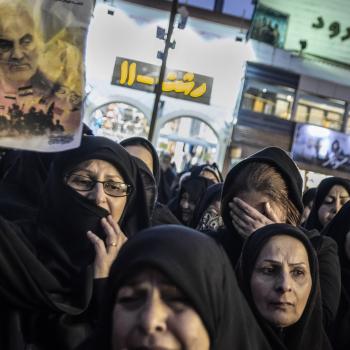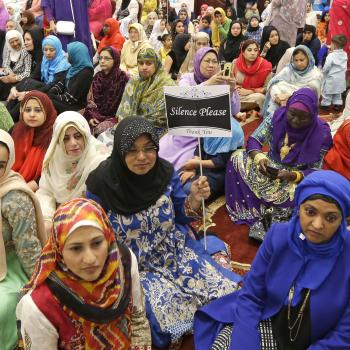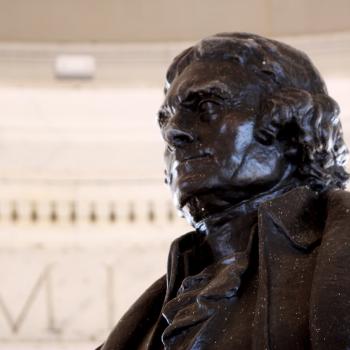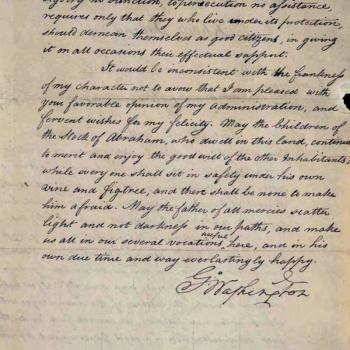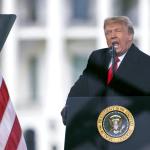By Abdeali Ujjainwalla.
Former Gujarat Chief Minister Narendra Modi’s ascendency to Prime Ministership in India has re-ignited the debate among the Dawoodi Bohras who are overwhelmingly Gujarati either as resident in the state, or resident elsewhere but with ancestral roots to the state. While most discussion tend to revolve around the 2002 Gujarat carnage where many Bohras were victims of violence and Modi was accused of abetting the violence, this brief article focuses instead more on the present by asking two salient questions: what are some of the variations and nuances in the relationship between Modi and the Bohras today? And how did the Bohras vote in the 2014 Indian General Elections (GE)? This article argues that the relations between Modi and the Bohras is one of profound ambivalence in the sense that there is a range of perspectives from within the community as far as Modi is concerned. It also suggests that, despite the profound ambivalence, the Bohra vote was likely to have been split between Rahul Gandhi’s Indian National Congress and Modi’s Bharatiya Janata Party (BJP) in the 2014 GE.
The Dawoodi Bohra Leadership and the Kothar
The late-Syedna Mohammed Burhanuddin Saheb, the 52nd Dai al-Mutlaq (absolute missionary) of the Dawoodi Bohras and Modi had a close and cordial relationship. The deferential manner by which Modi would greet Syedna showed the incredible respect Modi had for the 52nd Dai al-Mutlaq. So when Syedna passed on in January 2014, Modi unsurprisingly conveyed his condolences with the message, in his words, ‘We will remember Syedna Sahib as a great man who devoted his life in bringing smiles on people’s faces and spreading message of peace, harmony…His demise is a great loss for society.’ In addition, when 18 Bohras were killed and 50 were injured during a stampede at Syedna’s funeral procession, Modi again took to Twitter to offer his condolences to the families of those who perished and prayers to those who were injured. It must be noted however that the meetings between Syedna and Modi palpably drew a mixed response of support and consternation. The latter pertained to the puzzle as to why Syedna would meet with Modi especially after Modi was accused of abetting the Gujarat violence not just by those within but also those outside of India. Modi was a pariah in the eyes of the global human rights fraternity. While the more extreme viewpoint was that Syedna was being opportunistic by guarding his own interests, the more mainstream view was that Syedna believed that the best way forward was to bring Modi into the conversation, instead of castigating him as others have done. It was, in a sense, a laudable foresight on the part of Syedna because now that Modi has become Prime Minister, the Dawoodi Bohra leadership would be known to Modi at close quarters. In much the same way, Syedna’s son, the 53rd Dai al-Mutlaq Syedna Mufaddal Saifuddin Saheb (note: his position has been disputed by some Bohras) also met with Modi to continue, if not strengthen, the good-natured relationship started by his father. Syedna the 53rd was reported to have ‘hailed the able leadership qualities of Modi and wished him great success in taking India to greater heights.’
As far as Modi is concerned, his courtship with Syedna the 52nd can be explained in one of two ways. The first was that he genuinely held Syedna in high regard in that Modi found Syedna to be someone who commanded respect as a leader of the million-strong Dawoodi Bohra adherents worldwide. The second was that he was a consummate politician in that such a courtship could mean access for the BJP to a fairly large vote-bank of Bohras residing in Gujarat and elsewhere in India. It could also enable Modi to issue a calculated political statement to elucidate that he was neither disconnected with the Muslim minority nor deserted by the Muslims altogether as evidenced by his relations with the Bohra leadership in India. It is however the opinion of the author that it is the confluence of both factors that motivated Modi to pursue courtship with the Dawoodi Bohra leadership just as it was believed to be in the interest of the latter to engage rather than isolate Modi especially after the Gujarat carnage.
Central to Syedna-Modi relationship was the role of the Kothar, a juggernauted clerical administration of the Dawoodi Bohra community. It is the equivalent of a centrally-bloated bureaucracy, but with a lobbyist-revolving door where money politics predominate. It is within the Kothar that political and economic opportunism can be found in large quantities. No wonder then that the motivation of the Kothar bureaucrats was to have good links with Modi in two respects. One was for political reasons so as to remain in the good books of Modi first as Chief Minister of Gujarat and now as Prime Minister-elect of India. A source close to the author informed him that the Dawoodi Bohra leadership, through the Kothar transmission belt, has privately congratulated Modi on his victory. Two was for business purposes since Kothar oversees numerous properties and manages several enterprises in India. The support of the Indian political leadership would indeed be paramount to both protect and expand the business interests of the Kothar ostensibly on behalf of the Dawoodi Bohras in India and elsewhere. Such support is made more significant with the current legal proceedings taking place, at the time of writing, between the 53rd Dai al-Mutlaq and the disputed claimant Khuzaima Qutbuddin Saheb.
Ordinary Indian Dawoodi Bohras
Depending on who you talk to, you will get a different perspective of Modi. The first category are those who were directly affected by the Gujarat riots. There are some who will neither forget nor forgive while there are others who may forgive but not forget. For the former, some of the families who have lost loved ones are still fighting for justice in the courts by incriminating Modi in the Gujarat carnage; but despite their best efforts, justice has not prevailed. The blood-stained Modi has neither apologised nor is remorseful for the bloodshed in Gujarat. Comparing the victims to a puppy, he nonchalantly said that if ‘someone else is driving a car and we’re sitting behind, even then if a puppy comes under the wheel, will it be painful or not? Of course it is. If I’m Chief Minister or not, I’m a human being. If some-thing bad happens anywhere, it is natural to be sad.’ Despite Modi’s unremorseful arrogance, many Bohras have tried to rebuild their lives by moving on from the riots with some being successful while others less so. After over a decade since the carnage, there may be Bohras who are able to forgive but they will certainly not forget one of the darkest days in the post-independence history of the country.
The second category consists of Bohras who were not directly impacted by the Gujarat bloodshed in that they were probably residing in those areas of Gujarat which escaped the violence, or they were residing in other parts of the country. Some Bohras within this category stood in solidarity with their brethren in Gujarat especially if they had kinsfolk who were tragically affected by the carnage. Others adopted a more pragmatic, instead of, a sentimental outlook as far as the Gujarat bloodshed and Modi’s role in it was concerned. Quite a number of Bohras belong to this category in that they were focussed more on their own interests and that of their families. They have attempted to embrace a more sanguine view that the future is a fairly optimistic one, despite the injustice suffered by their brethren in Gujarat. Issues such as education, health, and the economy are of utmost importance to them, and so it is very possible that Bohras belonging to this category would vote based on domestic issues of direct concern to their daily lives. They make up what is essentially middle-ground pragmatic voters in India.
The third and final category comprises Bohras who effectively take their cue from the Kothar on who they should vote during election time. Many of them tended not be as informed about electoral issues, and so were likely to look elsewhere for guidance before casting their vote. Given their perceived undivided loyalty to the Dawoodi Bohra leadership, the directive from Kothar could assist them to that effect. It can be argued that the late-Syedna and his successor’s publicly-known good-natured relationship with Modi could have also influenced the decision of this category of Bohras to vote for BJP in the 2014 GE. It was as if the Syedna-Modi meetings were an implicit endorsement of Modi’s candidacy as the next Prime Minister of India. The writing was on the wall for a vote swing from Congress to BJP.
Non-Resident Indian (NRI) or People of Indian Origin (PIO) Bohras
Another category of Bohras who have ambivalent views about Modi were those staying out of India either as NRIs who have voting rights or PIOs who have no voting rights. But irrespective of their voting rights, Bohras in this category were quite vocal in their views about Modi and the BJP. Many PIOs who had an interest in the elections appeared to be vociferous in their opposition to Modi. Not least because they viewed Modi as being culpable in the Gujarat bloodshed and a Modi-led BJP could spell the worst for the minorities in India if the 2002 riots was taken as a guide. By not having a direct stake in the elections apart from maybe having friends and relatives residing in India, the vehement opposition to Modi was expected. Concurrently, there were also PIOs who were pragmatic in their viewpoints in the sense that they understood that change was required in India after an abysmal performance by the Congress-led government especially with regard to the economy. Some PIOs have also gone to the extent of opining that the Indian Bohras should just move on from the 2002 riots and give Modi’s BJP a chance to lead the country. In the end, most PIOs came to the conclusion that, despite their diverging points of view, it was ultimately for the people of India, including the Bohras, to decide whether Modi or Rahul should lead the country after the 2014 GE. The same points of view were also adopted by the NRIs. But because they had a stake in the GE, NRI Bohras were concerned that while political change was necessary, Modi’s chequered past could prove to be a tricky, and maybe even a perilous ride for the minorities, if Hindutva (Hindu Nationalism) gets fused with the secular governance of the country.
Some Inferences on Voting Behaviour of the Dawoodi Bohras
Dawoodi Bohras have traditionally been Congress supporters. Not least because, as a minority community, it viewed Congress as the most viable party to bring peace and stability to the country. Being rooted in social justice and secularism also made Congress an instant attraction to the Indian minorities, not least for the Dawoodi Bohras who generally viewed themselves as apolitical and their faith as being a deeply personal thing under the spiritual guidance of the Dai al-Mutlaq. The main agenda of economic development was also close to the hearts of the Bohras as many were businessmen as well as being professionals in a variety of fields and disciplines. In short, Bohras wanted three main things from the government of the day: political stability, economic development, and religious freedom, which is also enshrined in the Indian Constitution. Bohras would thus vote for the party that can promise those deliverables.
Come the 2014 GE, there seemed to be a vote swing from Congress to the BJP to the extent that there was a split in the Bohra vote. To what degree the vote swung is not immediately clear, but several inferences can be made especially in Gujarat and Mumbai (Maharashtra) where majority of the Bohras reside. First, it can be argued that several Bohras must have voted for BJP in Gujarat as evidenced by BJP’s remarkable performance in the state where the party won all the 26 Lok Sabha (lower house of the Indian Parliament) seats. Second, it can be inferred that since the BJP-Shiv Sena alliance made a clean sweep of all 6 Lok Sabha seats in Mumbai, several Bohras must have shifted their voting choice from the incumbent Congress-Nationalist Congress Party alliance to the BJP-Shiv Sena alliance instead in 2014. There were several reasons for the Bohra vote going to the BJP. One was the good-natured Syedna-Modi relationship which then trickled down to the masses who probably viewed this cordiality as a signal to vote for the BJP. Two were the efforts at normalisation of ties with Modi by the Bohras in Gujarat with the blessings of the Kothar. Three was the increasing involvement of Bohras at the BJP grassroots especially in Gujarat, which then had the knock-on effect of getting more Bohras to support the BJP by letting the bygones of Gujarat riots be bygones. Four and finally were the pragmatic voting by Bohras who cast a ballot for economic growth and employment opportunities as against a vote premised on communal reasons. Congress’ failure to deliver swung the pendulum towards the BJP, and in particular to Modi, who even some Bohras concede, had revitalised the economy in Gujarat.
Not all Bohras voted for BJP of course. Others must have voted for Congress or its alliance parties with a handful even voting for third parties, because they preferred neither BJP nor Congress. Those who did not vote for BJP were primarily those who had not forgiven Modi for his culpability in the Gujarat carnage, or viewed BJP, with its connection to the extreme right-wing Rashtriya Swayamsevak Sangh (RSS), as detrimental to the fate of the minorities, particularly of Muslims, in India. Belonging to this category are also the progressive Dawoodi Bohras who have battled long and hard against what they perceived to be an autocratic regime in need of reforms. Most of them, if their forum is to be believed, would have voted against the BJP as illustrated by their criticisms of the cosy relationship between the Dawoodi Bohra leadership and Modi plus the behaviour of some mainstream Bohras towards Modi.
Concluding Remarks
Quite clearly, there was a profound ambivalence in the relationship between Modi and the Dawoodi Bohra community as illustrated here by the range of perspectives towards Modi and the BJP more generally. Such perspectives were then manifested in the differing voting behaviour at the 2004 Indian GE where there was a split in the Bohra vote. In the overall scheme of things, the Bohra vote would have mattered very little as Congress was thoroughly defeated by the BJP in the elections. But the pendulum swing in the Bohra vote was a broader manifestation of how Congress was fast outliving its usefulness and losing its appeal as a national party in India. Notwithstanding the Syedna-Modi cordial relationship, it would be premature to presume that Modi would somehow grant special protections and privileges to the Dawoodi Bohras as opposed to other communities in India. The most the Bohras can hope for, as with other minorities, is that the Modi-led BJP government focuses on a coherent policy of an all-encompassing economic development as against policies that may divide the country along ethno-religious lines. Only time will tell if Modi can deliver on its campaign promises, but it is hoped that during Modi’s tenure in office, there is, at least, no repeat of the 2002 Gujarat massacre.
Abdeali Ujjainwalla, an Asianist, has a doctorate in political science from University College London. He blogs more in his mind than on the web.



